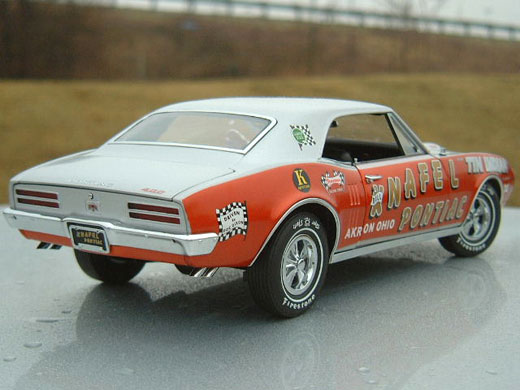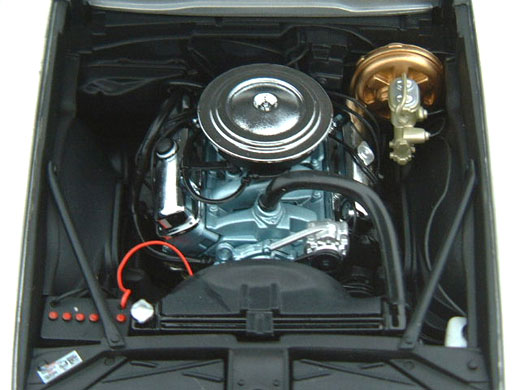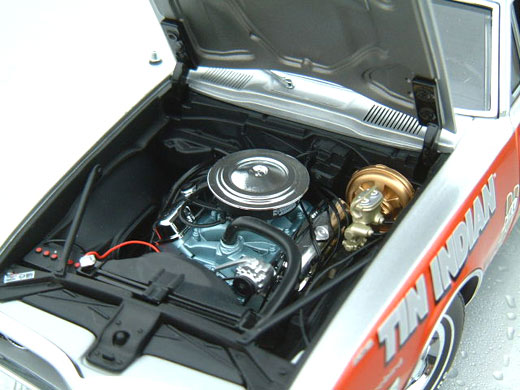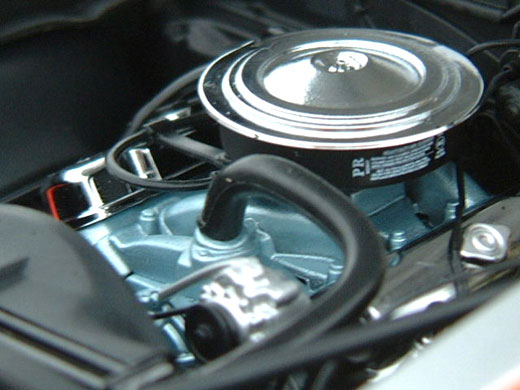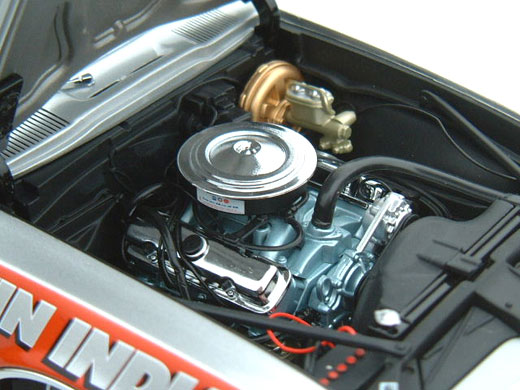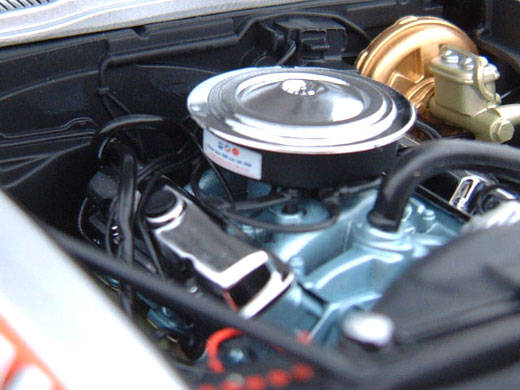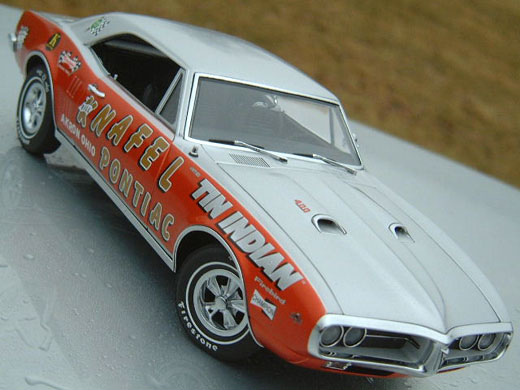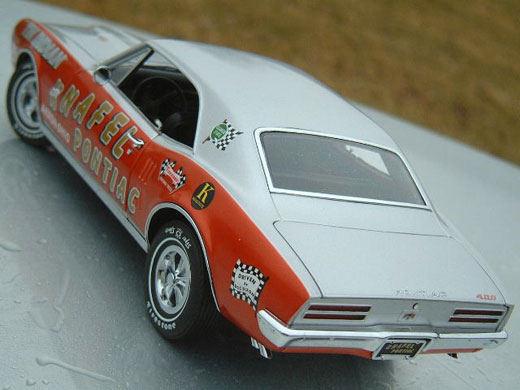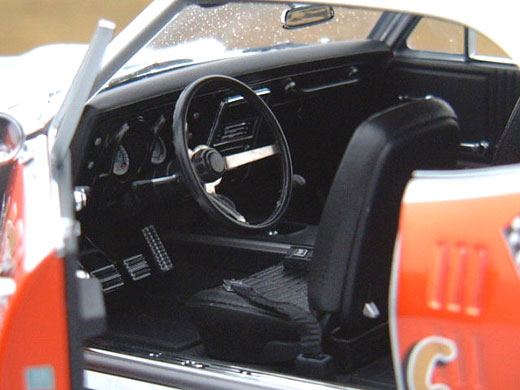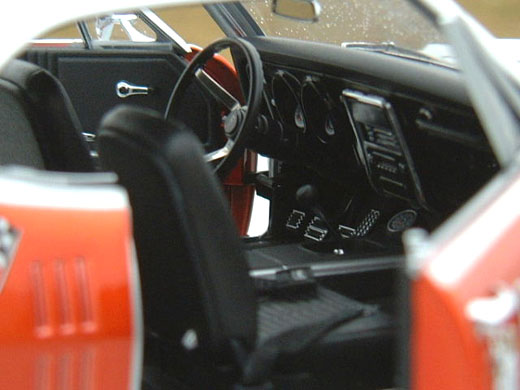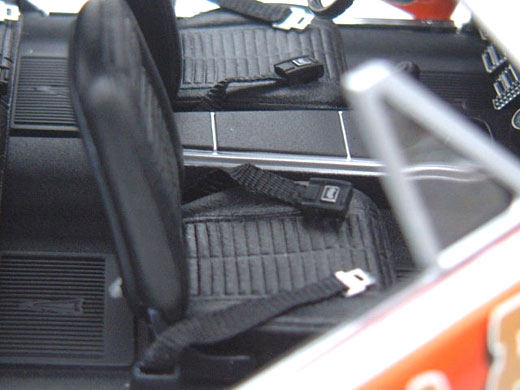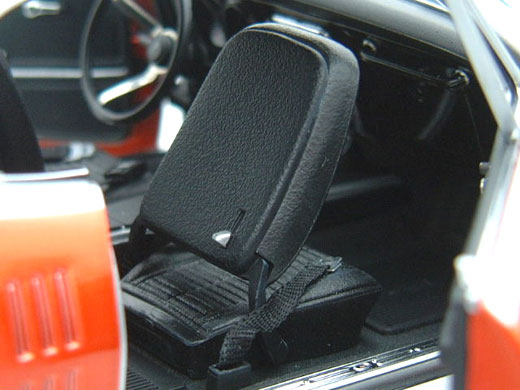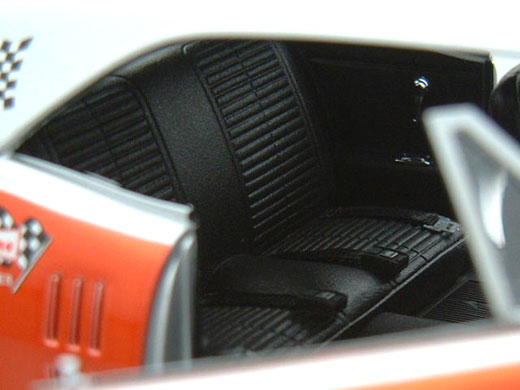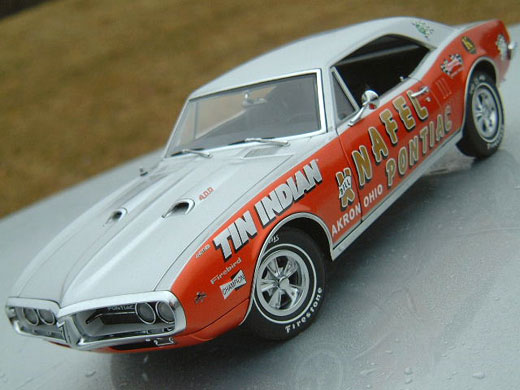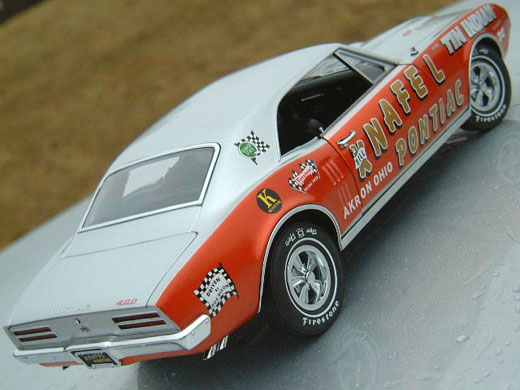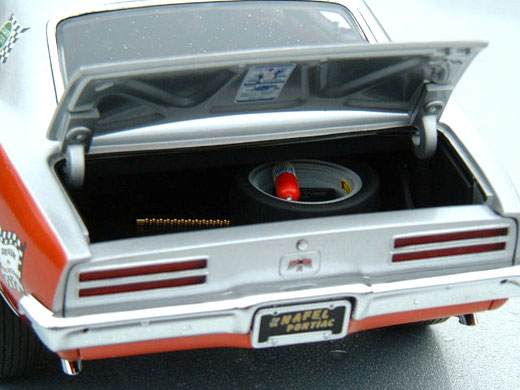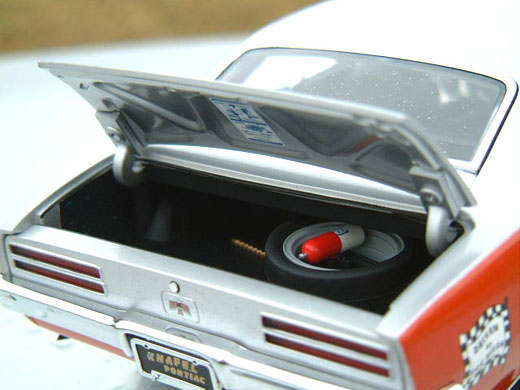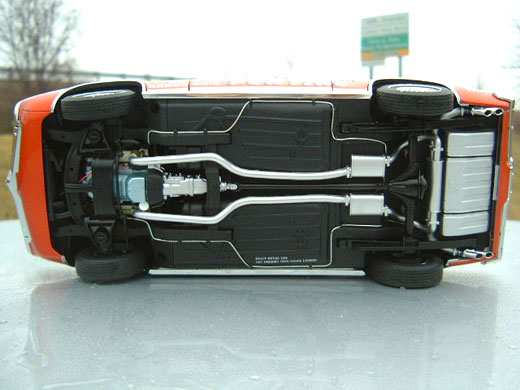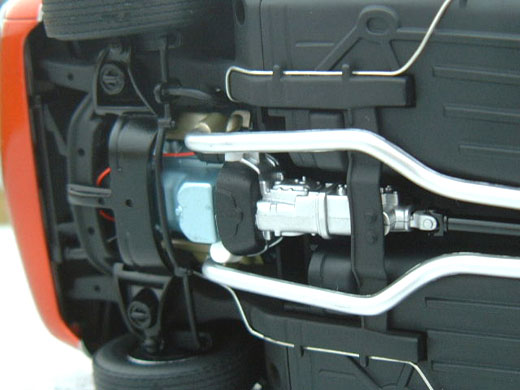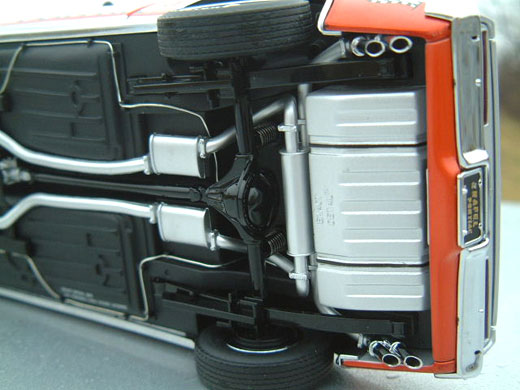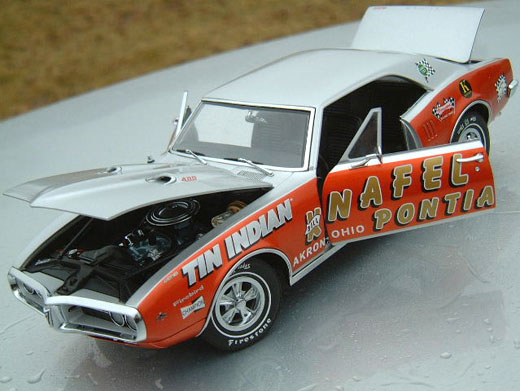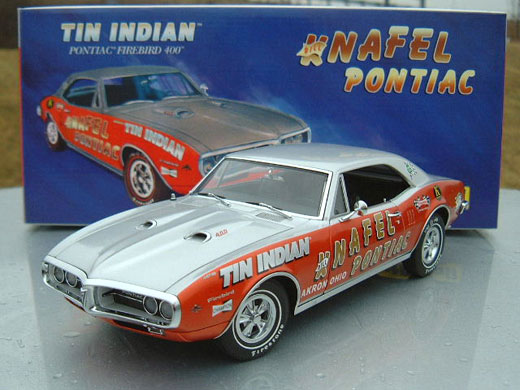|
|
 "Leave it to Pontiac to do it right." In 1967, with their entrant in the sporty ponycar series, Pontiac did it better than right, they did magnificently. With the introduction of the ponycar class in 1964, pioneered by Fords Mustang, each manufacturer was out to prove they could do it best. Plymouth had the Barracuda, Chevy had the Camaro, and Pontiac had the Firebird. "Leave it to Pontiac to do it right." In 1967, with their entrant in the sporty ponycar series, Pontiac did it better than right, they did magnificently. With the introduction of the ponycar class in 1964, pioneered by Fords Mustang, each manufacturer was out to prove they could do it best. Plymouth had the Barracuda, Chevy had the Camaro, and Pontiac had the Firebird.
The Pontiac Firebird was conceived in 1967 at the hands of then leader of GM's Pontiac division, John DeLorean. DeLorean had envisioned a sports car that would annihilate the Mustang, but it was originally named Banshee and it originally resembled the body style that would be used on the C3 Corvette. After GM forced Pontiac to abandon DeLoreans 2-seater Banshee concept, they had no choice but to go back to the drawing board with little time as Chevy was about to unleash their Camaro on Fords Mustang. In an effort to have their own sports car as soon as possible, Pontiac used the F-body of Chevy's Camaro as a basis for the Firebird.
Introduced in February 1967 as a mid year model, 5 months after the Camaro's launch, Pontiac's Firebird was hardly a rehash of the Chevy Camaro. The Firebird was unveiled with a unique split grill front-end, modified hood, six vertical louvers on the front of the rear quarter panels, and louver style spilt horizontal taillights. Underneath, the Firebird made use of the GTO's drive train with a different rear end, as well as improved front suspension and reinforced rear springs. Offered in 2 door coupe & convertible form, Pontiac's Firebird flew from the nest in 1967 with 5 different engine choices, advertised as the magnificent five. Each with their own distinctive personality, the magnificent five were each designed, built and optioned for a specific style of driving.
For those economists that wanted a fun ride at an affordable price, the stock Firebird with the standard 230ci-165hp OHC six-cylinder was the perfect choice. If the standard Firebird wasn't enough fun, the Sprint offered a quicker ride by way of a four-barrel 230ci-215hp six cylinder with greater stability that seemingly welded the car to the road. For the family man that preferred the sports car to the family station wagon, Pontiac was able to please everyone's needs & desires with a practical 326ci V8 capable of cranking out 250 horses with the air conditioning running. For the performance enthusiasts that had pavement pounding in mind, melting your tires was never made easier with Pontiacs HO (High Output) 328ci V8 growling under the hood with 285 horses running wild. And if that still wasn't enough, the true blacktop bruisers would be in heaven behind the wheel of Pontiacs fire-breathing 325hp 400ci V8 earth scorcher. Heavy-duty floor shifter, wide oval tires, and twin non-functional hood scoops were added to round out Pontiacs top of the line ponycar. Check off the Ram Air option, and those twin scoops became functional, adding an additional 25 tread thrashing horsepower. Even though Pontiac came late to the table in 1967, the Firebirds introductory year was nothing short of explosive with over 33,000 unit sales in less than 2 months culminating at the end of the 7 month production year with an impressive 82,560 Firebirds sold.
Many of Pontiacs Firebirds flew out of Akron Ohio's based Knafel Pontiac dealership, located on South Main Street & run by Akron local and prominent Pontiac dealer, Bill Knafel. Bills accomplishments not only included selling Pontiac's, but he was also responsible for early testing on Pontiac's GTO & Trans Am programs. Outside of selling & testing Pontiac's, Bill Knafel was also a renowned drag racing enthusiast. He embraced the ranks of NHRA, IHRA, AHRA & NASCAR from the beginning and made his Pontiac dealership the home base for several two-lane louts the likes of Arlen Vanke, Arnie Beswick and Larry "Doc" Dixon. Knafels greatest achievement was undoubtedly managing the most organized and arguably fearsome group of quarter-mile contenders, the Tin Indian racing team.
The Tin Indian racing team consisted of three airplanes, two transporters, a travel RV, a complete machine shop, and fourteen full-time personnel. Bill Knafel and Knafel Pontiac owned and paid all expenses for the Tin Indian. Over the years, there were 42 Pontiacs in the Tin Indian family, from the first Tin Indian, a 1962 Catalina 421 driven by Arlen Vanke, to the Tin Indian GTO's & Firebirds of the 70's. The Tin Indian cars won everything in sight from regional & world championships - highlighting in 1966 with a GTO that took home 27 various trophies in a single year making it the winningest Pontiac in drag racing history - to honors for best paint & show in 1967 with the Tin Indian Firebird 400. As a race team, the Tin Indian won over 200 national and world championships, more than GM, Ford and Mopar. Knafels accomplishments as a team owner have yet to be surpassed by any stock class drag racing team.
In 2003, a new member has been inducted into the Tin Indian family the 1/18 scale Lane Collectables Exact Detail 1967 Tin Indian Firebird 400. The team of Lane Collectables & Exact Detail have teamed up with Bill Knafel to bring collectors the finest replica of one of the most beautiful cars in the Tin Indian lineup. And like its original inspiration, the 1/18 scale Tin Indian Firebird is bound to win awards for best of show.
For starters, the overall fit & finish on Lanes first Firebird in the Exact Detail series is top notch. The quality of the paint & graphics is supreme and the accuracy of the race day decals is dead on. The shape of the Firebird is exact and the stance has been accurately captured. The front chrome plated grille is a work of art, the shape is authentic Firebird with its dual headlights recessed in chrome trim rings on both sides and the Pontiac arrowhead set at center stage. The Firebird logos are appropriately placed on the front fenders and on the rear gas door centered between split horizontal taillights. The Tin Indian rides on a set of chrome plated Hurst mags wrapped in authentic white-line Firestone Wide Ovals. According to an image of the actual Tin Indian on the packaging, the white-line Firestones are accurate as is the inverted printing of Firestone.
The Tin Indian Firebird is the first Lane diecast to incorporate the new door hinge design and they glide open & shut in a very smooth motion. This design is Lanes own, not borrowed from anywhere else. The doors glide open to the most spectacular interior ever designed by Lane, and quite possibly one of the nicest interiors I've ever seen. The detailed gauges, chrome plated trim, detailed steering wheel & floor pedals are things we've come to expect in a Lane interior. You'll also be pleased with the chrome plated sill plates, the woven fabric seat belts with detailed clasps and locking mechanisms that are even better looking than the ones used on Lanes Oldsmobile series, the detailed headliner with dome light, and the simulated carpet flooring. There are 2 other details you'll discover that you weren't expecting, one small and one great. The small one being the detailed lever on the seatback for pushing the seatback forward, and the great one being the soft & realistic vinyl touch the seats have. It may not sound like a big deal, but it is a vast improvement over the bland feel of the seats in Lanes Camaros. The seats are soft to the touch and when you rub your finger across them, it feels like honest to god vinyl under a rich application of Armor-All. You can even see the texture in the seats, its incredible.
The engine compartment is no exception. For starters, the ram air hood is detailed with "400" tampos and dual hood scoops that are not just their for looks. The dual snorkels are actually cut out in the hood feeding cold air to the scale 400 cubic inch V8. Now, while the hood isn't propped up with those ultra cool hinges found on the Precision 100 cars, they are very similar to the arms used on the GMP GTO's & Lane Oldsmobile's, but function much better with the biggest difference being their size. They are very small swing arms placed at the edges of the hood, preventing them from cutting into the firewall detail whatsoever. The Pontiac powerplant is fully detailed with a plethora of wires & hoses, including a wired battery, wired distributor, wired windshield fluid reservoir, and a detailed master cylinder with brake fluid lines. The engine bay is finished off with chrome plated valve covers and a detailed air cleaner with accurate labels. The undercarriage is accented with a detailed transmission & oil filter as well as fuel and brake lines, a detailed gas tank and an exhaust system finished in Lanes signature stainless steel treatment that exits through a pair of chrome plated exhaust tips. The opening trunk is another blessing to be discovered on the Tin Indian. Inside, a highly legible trunk label will be found as will a detailed jack, and a space saver spare tire with the needed can of compressed air just in case this bird happens to set one of its pavement pounders aflame and needs the spare to get home.
The Lane Exact Detail 1/18 scale Knafel Pontiac Tin Indian 1967 Firebird is another homerun for the gents in Michigan. As Bill Knafel himself put it, "The difference between Extraordinary and Ordinary is a little Extra". Lane has put alot of extras into their first Firebird and the Tin Indian is nothing short of Extraordinary. I highly recommend this car to everyone, and with only 3,000 being made, its not going to be around for long. |
1967 Tin Indian Firebird Pontiac, Lane Exact Detail
|
|
Total diecast model cars in 1967 Tin Indian Firebird Pontiac, Lane Exact Detail: 0
|
|





